Welding copper and stainless steel can be a challenging task, as the two metals have different properties and react differently to heat.
TIG welding is one of the best methods for welding these two metals together, as it allows for precise control and minimal heat input.
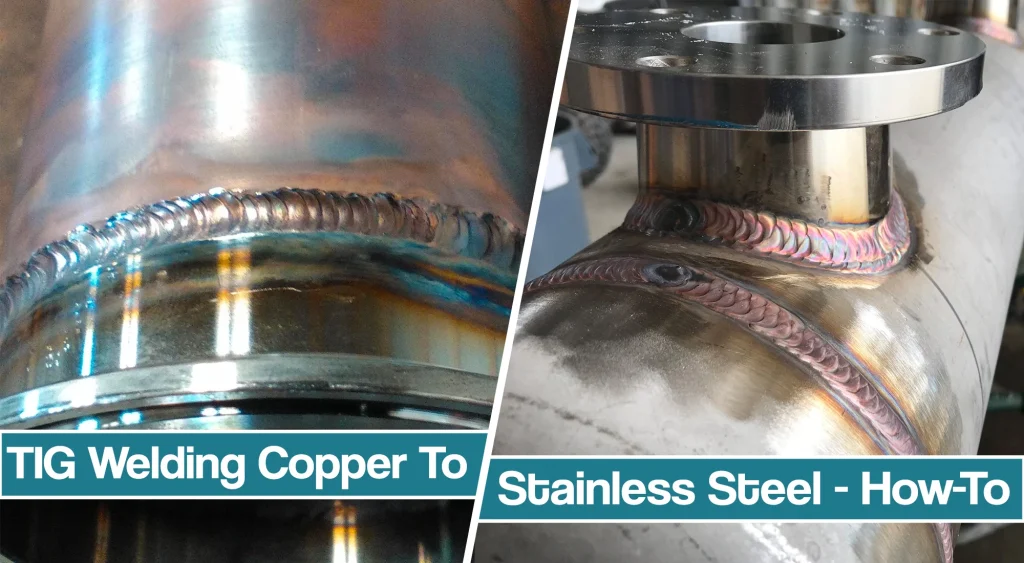
But, getting the right technique and equipment is essential to achieve a strong, clean weld. In this article, we will take you through the process of TIG welding copper to stainless steel, including tips and tricks for a successful weld every time.
Can You Weld Copper To Stainless Steel?
Yes, you can weld copper to stainless steel, but with certain precautions. Welding these dissimilar materials is used in a variety of applications, such as in food processing, marine applications, and chemical processing plants.
TIG welding copper to stainless steel is a reliable and effective way to join two dissimilar metals together. It provides superior weld strength and corrosion resistance compared to other welding methods.
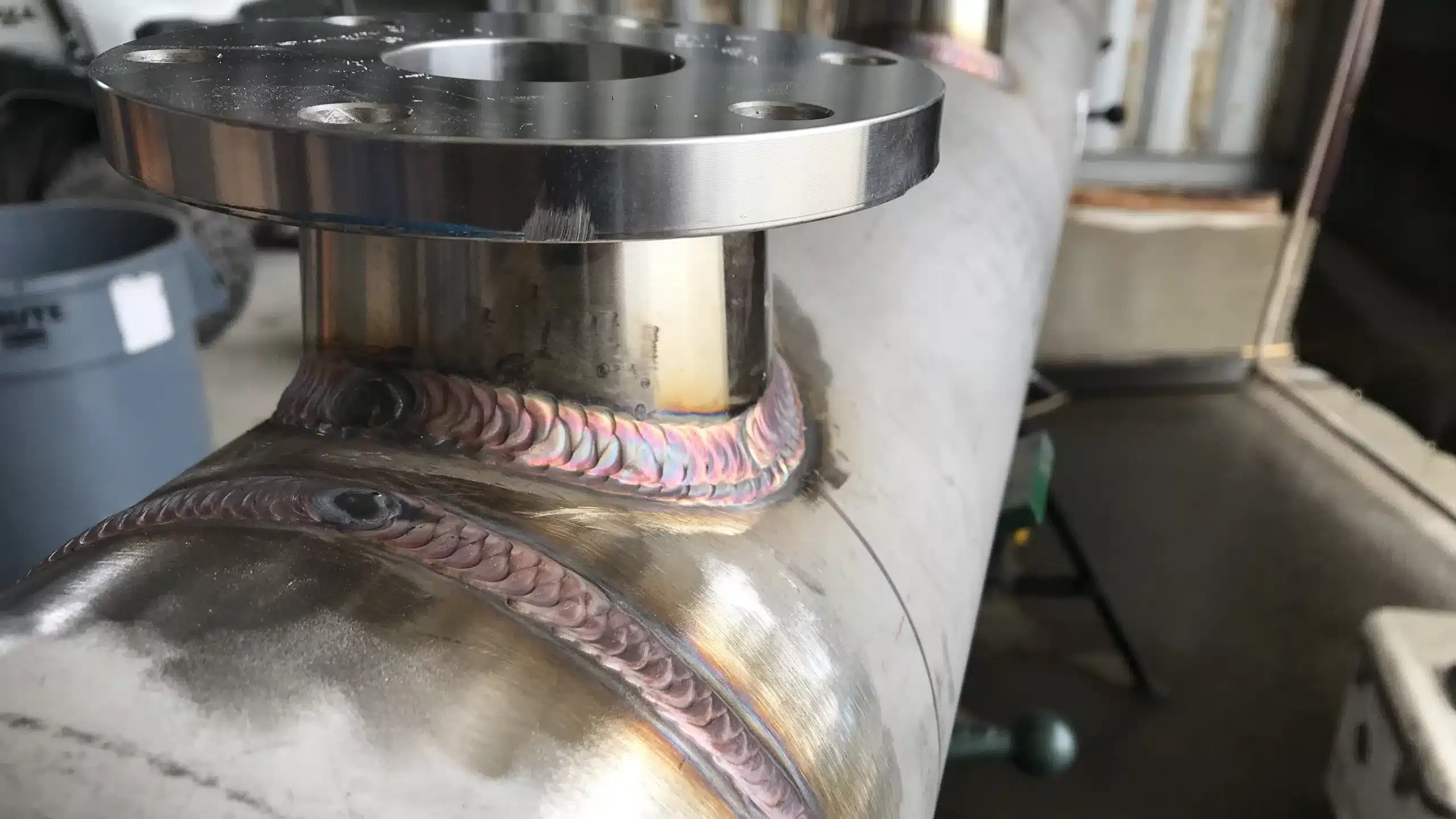
The high temperature of the arc helps make strong, clean welds with minimal post-weld cleaning. When done correctly, this type of welding produces a solid state joint that is stronger than the base metal.
Why Choose TIG Welding To Join Copper And Stainless Steel?
The TIG welding process is a good choice for joining copper to stainless steel welds since the welder can control the heat input much more easily, and it can be used to weld tick on thin welding places with moderate success. Joining materials of different thicknesses and sizes is much harder with other welding processes.
Also, the benefits of TIG welding copper to stainless steel include improved corrosion resistance due to the formation of an oxide layer on the surface of the stainless steel during the welding process.
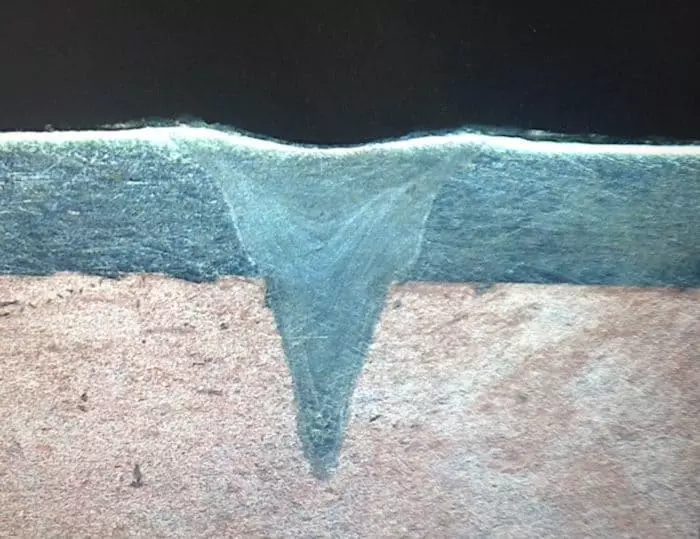
The oxide layer protects the underlying material from oxidation and other forms of corrosion. Additionally, TIG welding produces a cleaner finish than other welding methods, which reduces the amount of time needed for post-weld cleanup.
Finally, TIG welding copper to stainless steel offers excellent heat transfer properties, allowing for faster heat input into the workpiece while providing excellent control over the weld puddle. This makes it an ideal choice for welds that require precise control over the heat input and weld pool size.
Potential Issues Of Joining Copper And Stainless Steel
When welding copper to stainless steel, there are a few potential issues that can arise. One is the difference in thermal expansion rates between the two materials, and the other is the melting point and chemical composition overall. Even though MIG welding can also be used, GTAW deals with these issues greatly.
First up, the two metals have substantially different melting points. Stainless steel melts at around 1400 °C while copper melts at 1085 °C that’s a difference of 315 °C this makes forming a puddle of the two metals extremely difficult. Therefore, to weld steel to copper, you’ll need excellent control over heat affected zone.
Additionally, Copper has a higher thermal expansion rate than stainless steel, meaning it expands more when heated and contracts more when cooled. Copper welding with stainless steel can cause issues such as warping or cracking in the weld joint if the parts are not allowed to cool at a slow enough rate. Additionally, copper is much softer than stainless steel, so it is more susceptible to deformation when welding. As a result, it may be necessary to pre-form the copper part before welding or use appropriate shielding gas and filler metals to reduce the likelihood of distortion.
How To TIG Weld Copper To Stainless Steel?
To begin TIG welding copper to stainless steel, it is important to properly prepare the materials before welding and identify the alloys of both copper and stainless steel.
Both sides of the material should be degreased and cleaned with a wire brush or a grinder to remove any dirt, grease, or rust. It is also important to use the correct filler metals for the job. For copper to stainless steel, a nickel-based filler metal or silicon bronze should be used.
Next, it is important to set up the TIG welder correctly for the job at hand. The amperage setting should be adjusted based on the thickness of the material being welded and the type of filler metal being used. It is also important to adjust the gas flow rate depending on tungsten electrode tip and conditions. A smaller electrode tip requires a higher gas flow rate than larger electrodes do.
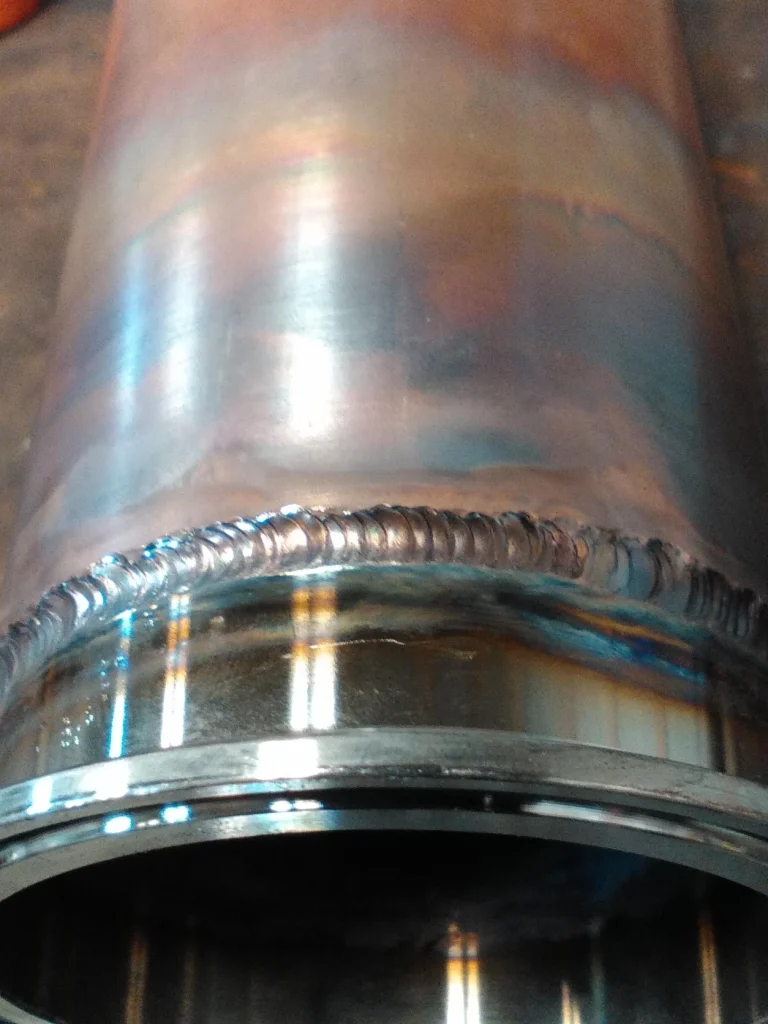
Once everything is set up properly, it’s time to start welding! Begin by striking an arc at one end of the joint using short bursts of current. Once an arc has been established, slowly move along the joint while continuing to feed in filler metal and adjusting current as necessary. It’s important to maintain a consistent speed and direction while welding in order to achieve good penetration and avoid any unnecessary defects in the weld area.
Identifying Alloys
Prior to welding, you should pay attention to copper and stainless steel alloys. Common stainless alloys used in applications where it is joined to copper include 304, 304L, and 316L. Preferred copper alloys include oxygen-free copper (OFC) and oxygen-free high thermal conductivity (OFHC) alloys. These alloys typically have 99.95% or better copper purity with very low levels of oxygen and another chemical element.
These are the ideal alloys when considering this type of dissimilar metal welding, but it is not only limited to these two. You can also weld coppers with zinc content, referred to as brass, and we will dedicate a short section to this type of base material.
Choosing The TIG Welder
To properly TIG weld copper to stainless steel, you will need an AC/DC inverter-based TIG welding machine. These machines are designed to offer versatility and precision when welding different types of metals, including copper and stainless steel. The power output of the machine should be between 10 and 250 amps for small to medium jobs, while larger jobs may require a machine with higher power output.
The welder will also need a TIG torch with the correct size of tungsten electrode for the job. Features such as pulse or remote amperage control via foot pedal or welding torch button can help control the heat throughout the welding operation.
Filler Metal For Copper To Stainless Steel TIG Welding
When welding copper alloy to stainless steel, one of the most important considerations is the choice of filler rod. Silicon-bronze brazing rod is an ideal choice for TIG welding copper to stainless steel because it has excellent electrical conductivity and corrosion resistance.
Additionally, the silicon content in the rod helps create a strong bond between the two metals along the edges of the welding seam that is resistant to corrosion and pitting.
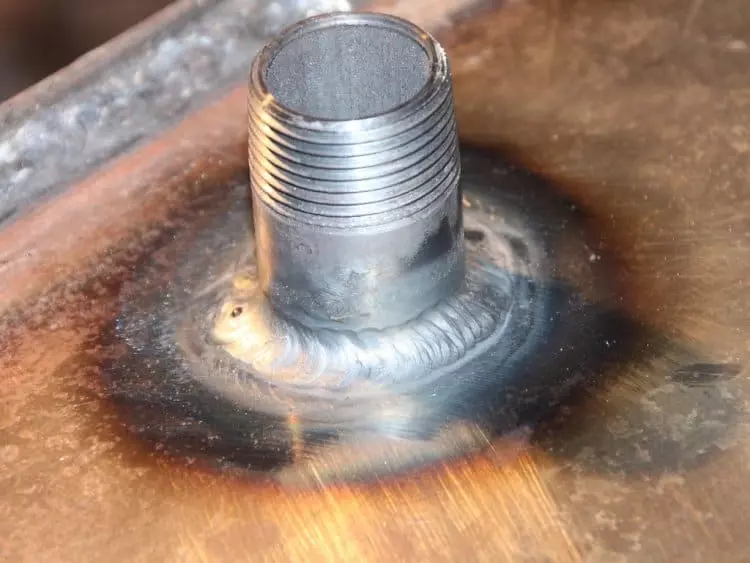
The higher melting temperature of silicon bronze also helps ensure a strong weld without weakening the joint over time. This makes it an ideal choice for joining dissimilar metals like copper and stainless steel.
An alternative in TIG welding copper to stainless steel is a copper-nickel filler wire. This filler has a higher melting point than pure copper and can withstand the high temperatures created during TIG welding without losing their strength or integrity.
Tungsten Choice For Copper To Stainless
A great choice for copper to stainless welding is pure or 2% thoriated tungsten for several reasons. First, these types of electrodes produce very little contamination of the weld due to their low burn-off rate. Second, they are less likely to experience arc wander (i.e., arc instability) due to their higher melting point, which allows for better control of the weld puddle. Third, their long service life makes them cost-effective in the long run as they require less frequent replacement than other types of electrodes.
However, thoriated tungsten electrodes are the most popular type of electrode used in TIG welding, due to their good arc performance at DC. Therefore, many recommend it as a suitable go-to choice for copper to stainless steel. Thoriated tungsten requires preparation, or sharpening for the best arc control.
Shielding Gas For Welding Copper To Stainless Steel
Pure argon (Ar) offers the best protection of the weld puddle in welding copper to stainless steel. Argon is highly inert and provides excellent protection from oxidation and contamination during welding. Additionally, Argon offers excellent arc stability, which helps ensure an even and consistent weld bead. Argon also has a low thermal conductivity, meaning it can help minimize heat transfer away from the weld area, resulting in faster weld times and better overall weld strength.
The use of Argon in this application also helps reduce spatter and spatters sticking to the surface of the metal being worked on, which leads to a smoother finish with fewer imperfections.
Weld Preparation
The preparation for TIG welding copper to stainless steel is essential because it ensures that the weld will be strong, durable, and free of defects. Before welding, it is important to clean the surfaces of both the copper and stainless steel parts. This should include removing any dirt, rust, or other atmospheric contamination on the surface that could affect the weld quality. It is also important to ensure that both pieces are properly aligned and clamped together so that the weld will be even and consistent throughout.
The joint design should have the weld energy come through the stainless first and then into the copper. That way, the right amount of heat can be applied to fuse the stainless to the copper. Any extra energy is quickly dissipated into the copper, much like a heat sink.
Welding Technique
Once the metals are prepared, you can set up your equipment for TIG welding. This includes using argon as the shielding gas, setting the DC polarity and amperage according to material thickness.
The next step is to start welding. Begin by striking an arc with the tungsten electrode of your torch and slowly move it along the metal while maintaining a consistent travel speed and travel angle of approximately 15-20 degrees. It is important to keep this speed constant in order to achieve a uniform weld bead. As you make your pass, it is also important to manipulate the torch slightly in order to ensure proper filler metal distribution and penetration into the metal.
Finally, when you come close to completing your weld, it is important to reduce your travel speed in order to ensure that you get a nice, clean finish on your weld bead. Once you have completed your weld, be sure to let it cool down before inspecting it for any imperfections or flaws.
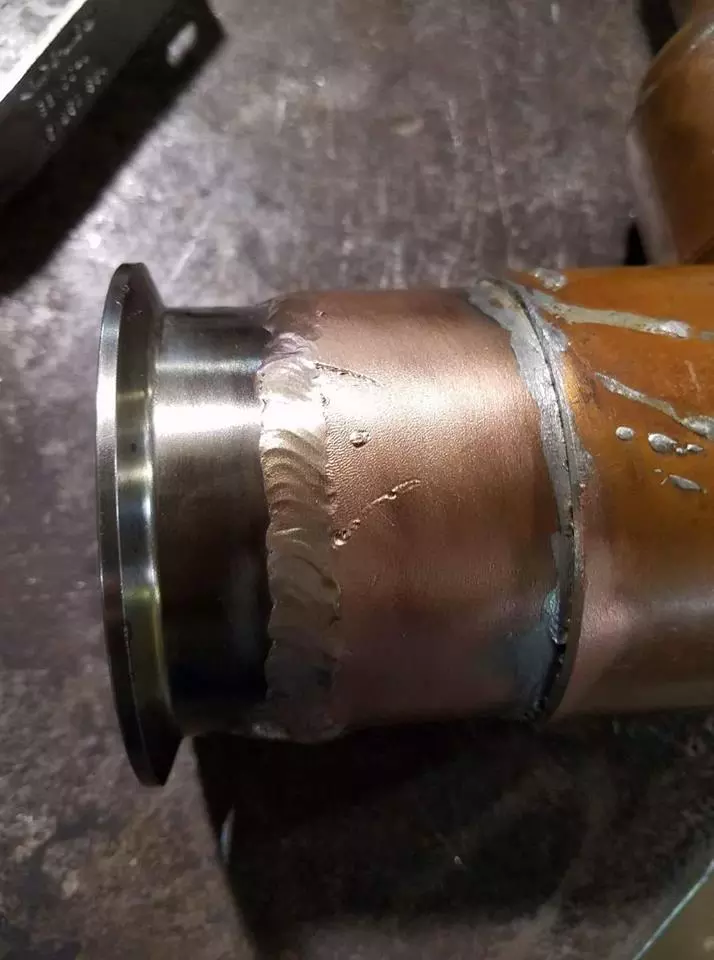
Tips For Successful TIG Welding Copper To Stainless Steel
- Clean both surfaces thoroughly according to materials science before welding to ensure there is no dirt, grease, or other debris present.
- Ensure that the stainless steel is well supported and clamped in place to prevent warping during the welding process.
- Use argon gas shielding for improved weld quality and reduced risk of oxidation.
- Start with low amperage (25-60 amps) and gradually increase as needed to achieve the desired penetration depth.
- Use a 2% thoriated tungsten electrode for maximum current transfer and stability while welding at higher amperage levels.
- Utilize a back gouging technique to remove any excess weld material and ensure the joint is completely full with no voids or porosity present.
- Stay consistent while moving the torch and adding filler metal along the weld seam.
- Perform a post-weld inspection to check for hot cracking, porosity, or other defects that may have occurred during welding.
Alternatives To TIG Welding Copper To Stainless Steel
Brazing and soldering are two alternative methods to TIG welding copper to stainless steel. Both brazing and soldering are widely used in industry, but they should not be used when high-strength joints are needed.
- Brazing is a metal-joining process that uses a filler metal to join two surfaces. It is similar to welding, but the temperature required for brazing is much lower (around 800°C–900°C, or 1472°F–1652°F). Adding flux with brazing increases the wetting of the joint and reduces oxidation. Brazing is often used to join copper and stainless steel together, as it can produce strong bonds with both materials.
- Soldering is a similar method to brazing, but the soldering rods melt at significantly lower temperatures than brazing and welding. The temperature required for soldering is around 450°C–480°C, or 842°F–896°F. Soldering has been used for centuries and is often used when joining copper and stainless steel as it can produce strong electrical connections between them. Solder also provides corrosion resistance and is relatively easy to use, but it cannot yield the same strength as welding.
How To TIG Weld Brass To Stainless Steel
Brass is one of the most malleable materials you can use in a welding process. It is essentially an alloy of zinc and copper and is popular as a base metal and filler material. The potential issues lie in the melting point of both materials, which is why most welders choose brazing or soldering.
However, you can also TIG weld brass to stainless steel, but be cautious of zinc fumes. These toxic fumes form once zinc starts to boil due to the heat of an arc, so make sure you wear a proper respirator, use a local exhaust system or weld in a well-ventilated area.
If you decide to try and TIG weld brass to stainless steel, make sure that both pieces of metal being joined are thoroughly cleaned and free from any dirt or other contaminants. This will help ensure that the weld joint will have good strength and integrity.
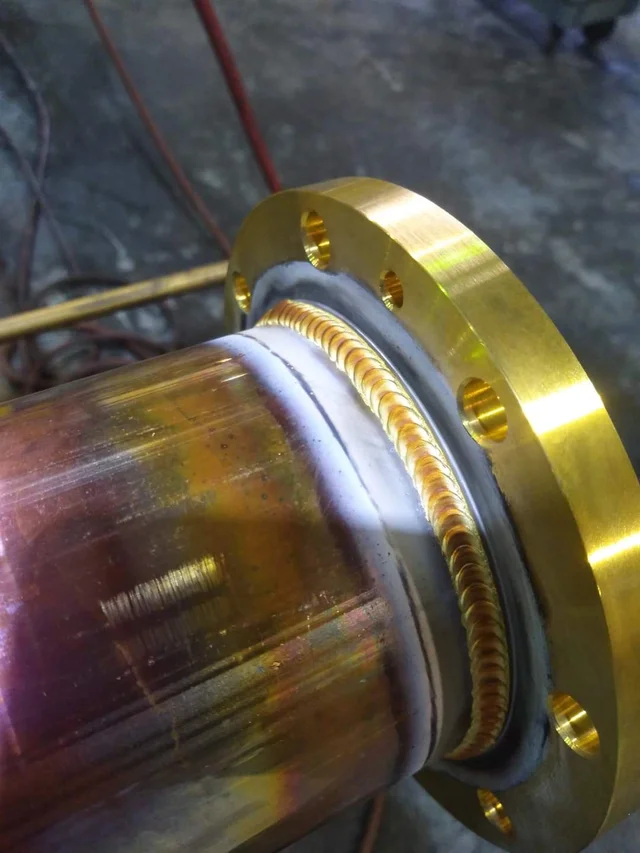
The current used for TIG welding brass to stainless steel should usually be between 80-150 amps, depending on the thickness of the materials being joined. Welders prefer 2% thoriated tungsten with 3/32” or 1/8” size, like with most other metals. Pure argon shielding will provide maximum protection for the weld puddle.
Generally, brass filler material is a good choice for this task as it allows for good flow and wetting with both metals being joined together. The filler material should also have properties that are similar to those of brass and stainless steel; this will ensure good penetration and strength in the finished weld joint. The welding technique is similar to copper to stainless steel welds due to the similar compositions of metals.
Conclusion
TIG welding copper plate or tube to stainless steel is a challenging but rewarding process that requires great skill and knowledge. Depending on the application, it may be necessary to use a filler material such as nickel or a special alloy to create strong TIG welds between the two materials.
Luckily, our article provides helpful advice and guidance on how to successfully complete this task-. With proper preparation and practice, it is possible to achieve beautiful results and ensure that the welded joint is leak-proof and free of any defects with the GTAW welding method.
Resources
- https://www.machinemfg.com/how-to-weld-copper-and-stainless-steel/
- https://adiforums.com/topic/3593-tig-welding-copper-and-stainless/
- https://learntomoonshine.com/how-to-solder-braze-and-weld-stainless-steel-to-copper/
- https://forum.millerwelds.com/forum/welding-discussions/19575-copper-to-stainless-tig-welds
- https://ebindustries.com/copper-to-stainless-steel-welding/
- https://www.metalworkmasters.com/welding/how-to-tig-weld-copper/





